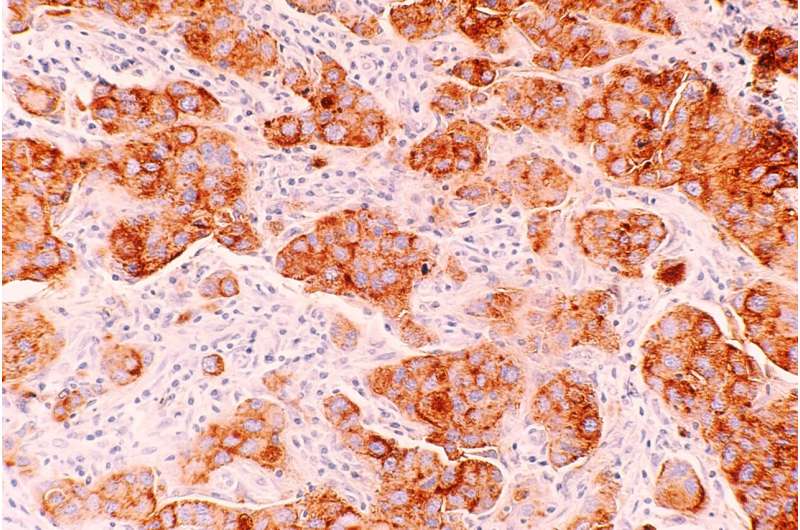This article has been reviewed according to Science X's editorial process and policies. Editors have highlighted the following attributes while ensuring the content's credibility:
fact-checked
peer-reviewed publication
trusted source
proofread
New breast cancer screening guidelines call for earlier and more-intensive screening for high-risk women

New American College of Radiology breast cancer screening guidelines now call for all women—particularly Black and Ashkenazi Jewish women—to have risk assessment by age 25 to determine if screening earlier than age 40 is needed.
The ACR continues to recommend annual screening starting at age 40 for women of average risk, but earlier and more intensive screening for high-risk patients. The new ACR guidelines for high-risk women were published online May 3 in the Journal of the American College of Radiology.
Other notable updates:
- Women with genetics-based increased risk (including BRCA1 carriers), those with a calculated lifetime risk of 20% or more and those exposed to chest radiation at a young age are recommended to have MRI surveillance starting at ages 25 to 30. These women should start annual mammography at ages 25 to 40, depending on type of risk.
- Women diagnosed with breast cancer prior to age 50 or with personal history of breast cancer and dense breasts should have annual supplemental breast MRI.
- High-risk women who desire supplemental screening—but cannot undergo MRI screening—should consider contrast-enhanced mammography (CEM).
"The latest scientific evidence continues to point to earlier assessment as well as augmented and earlier-than-age-40 screening of many women—particularly Black women and other minority women," said Debra Monticciolo, MD, FACR, primary author of the new guidelines and division chief, Breast Imaging, Massachusetts General Hospital, Boston. "These evidence-based updates should spur more-informed doctor-patient conversations and help providers save more lives."
Factors that contributed to the ACR reclassification of Black women and other minorities to high-risk include that, compared to non-Hispanic white women:
- Prior to age 50, minority women are: 127% more likely to die of breast cancer; 72% more likely to be diagnosed with breast cancer; and 58% more likely to be diagnosed with advanced-stage breast cancer.
- Black women are 42% more likely to die from breast cancer despite roughly equal incidence rates.
- Black women are less likely to be diagnosed with stage I breast cancer but twice as likely to die of early breast cancers.
- Black women have a two-fold higher risk of aggressive—"triple-negative"—breast tumors and a higher risk of BRCA1 and BRCA2 genetic mutations (placing them at higher risk).
"Since 1990, breast cancer death rates in Black women, who develop and die from the disease earlier, have only dropped approximately half as fast as in white women," said Stamatia Destounis, MD, FACR, co-author of the new guidelines, chair of the American College of Radiology Breast Imaging Commission and managing partner at Elizabeth Wende Breast Care in Rochester, NY. "We continue to regularly examine the latest evidence and update our recommendations to help save more Black women and others at high risk from this deadly disease."
According to National Cancer Institute Surveillance, Epidemiology, and End Results (SEER) data, since mammography became widespread in the 1980s, the US breast cancer death rate in women, unchanged for the previous 50 years, has dropped 43%. Breast cancer deaths in men, who have the same treatment as women but are not screened, have not declined.
More information: Debra L. Monticciolo et al, Breast Cancer Screening for Women at Higher-than-Average Risk: Updated Recommendations from the ACR, Journal of the American College of Radiology (2023).



















